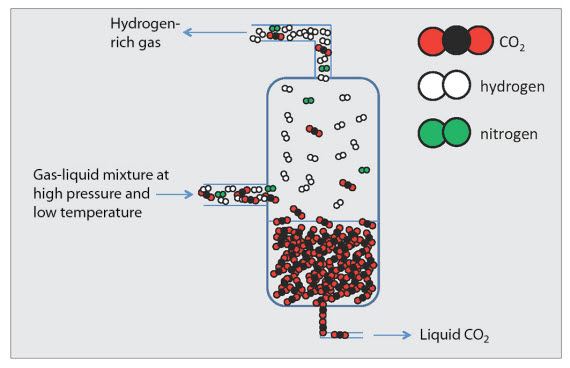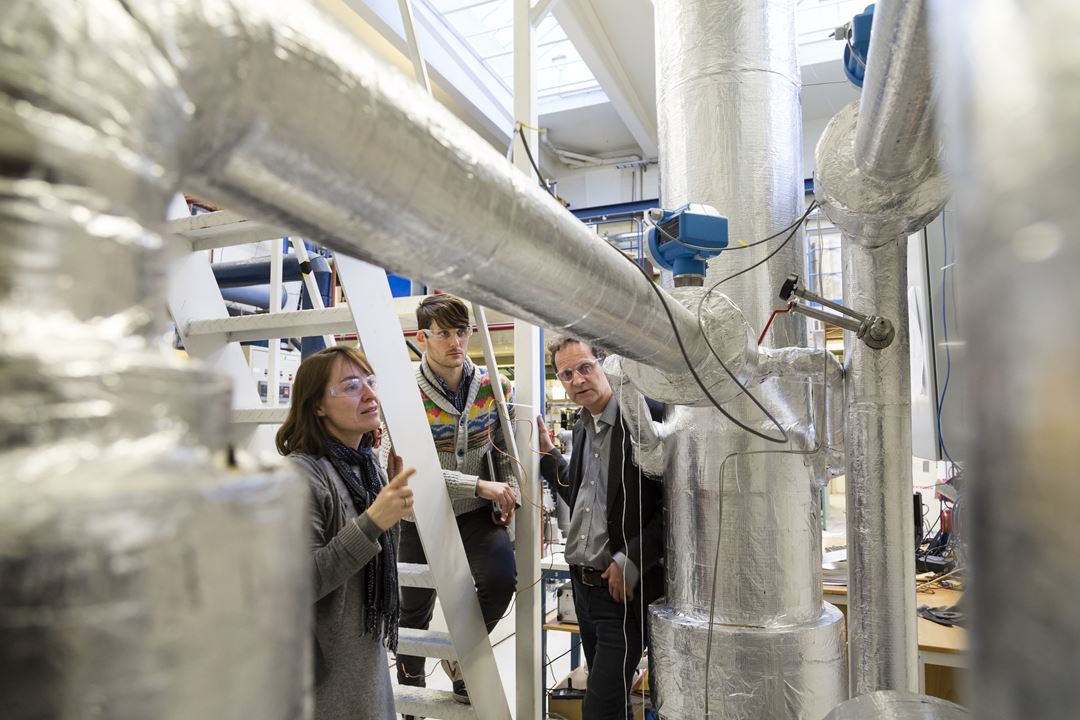All over the world, scientists are on the hunt for solutions that will allow CO2 to be captured from large power stations and industrial plants.
Many of the methods in use today employ chemicals or advanced materials to extract CO2 from flue-gases. But now, a chilly alternative is showing signs of heating up.
When CO2-rich gases are compressed and refrigerated, the carbon dioxide turns into a liquid – like steam on a cold bathroom mirror – and can be drawn off.
Calculations performed by SINTEF, the largest independent research organisation in Scandinavia, suggest that in many cases, this method is cheaper and less energy-intensive than competing capture methods, in spite of predictions that the opposite would turn out to be true.
This is good news for everyone who hopes that Europe will soon start to implement carbon capture and storage (CCS).
“CO2 captured in liquid form can be loaded straight aboard a vessel and be transported to offshore storage sites before pipelines have been laid. If our findings open up the possibility of cold CO2 capture, they could help to bring forward the introduction of CO2 storage beneath the North Sea,” says SINTEF research scientist Kristin Jordal.
Story continues below the figure

|
|
CO2 capture based on refrigeration has a number of potential applications. The figure shows how CO2 can be removed from gasified coal – i.e. coal which has been transformed into gas. Once CO2 is condensed, the remaining fuel gas can be burnt in a gas turbine power plant. Since the fuel is virtually free from CO2, there will be next to no CO2 in the power’s station’s flue-gases either. Illustration: SINTEF Energy Research. |
Sceptical
The scientists estimate that cold technology could cut the energy consumption and cost of CO2 capture by as much as 30 per cent in one of the “green” coal-fired power stations that the world is currently sniffing at.
The SINTEF scientists believe that the method will also be suitable for capturing CO2 when hydrogen is separated out of natural gas, as well as in cement, iron and steel production (see Fact-box).

|
| Core participants in the “Cold CO2 Capture” project discuss their results. From the left; chief scientist Petter Nekså, research scientist Kristin Jordal and David Berstad, MSc, all of SINTEF Energy Research. Photo: SINTEF / Thor Nielsen |
“We started to do these calculations out of sheer curiosity in the course of the European Union project DECARBit. Many people doubted whether refrigeration technology would save energy and costs in this context, and the project therefore scarcely passed through the needle’s eye in Brussels. But once we were given the green light, we were able to show that there are a number of important potential improvements to be made in the process. That said, cold CO2 capture turned out to be one of the most promising technologies,” says Jordal, although she emphasises that more research is needed before the answers can be regarded as final.
She and her colleagues find the results particularly satisfying in view of the low expectations that many commentators had ahead of the project.
|
Several potential applications
|
Stumbled on discovery
Sometimes it can be a good idea to test unlikely hypotheses. When the scientists first realised that the cold technology was promising, they almost missed the next, and perhaps most important, point.
As Jordal points out: “None of us who are working on CO2 capture thought of shipping when we started, but when my colleague Simon Roussanaly who works on CO2 transport saw the process, he immediately pointed out that low-temperature CO2 capture would give us liquid CO2, at just the temperature and pressure needed to load it on board a ship. It was almost too good to be true!”.
First ships – then pipelines
Until now, it has usually been regarded as most cost-effective and energy-efficient to send gaseous CO2 to its storage site by pipeline. This is because most of today’s CO2 capture technologies separate it out as a gas.
| Low Temperature CO2 Separation – SINTEF team members Rahul Anantharaman – concept development, low-temperature post combustion capture hybrid with membranes, process integration and simulations David Berstad – concept development low-temperature capture process, process simulations Kristin Jordal – project manager Gassnova pre-study, concept development H2 production from coal (in combination with palladium membranes) Petter Nekså – Scientific coordinator, concept development low-temperature capture process Simon Roussanaly – sizing and costing, concept idea of the low-temperature capture process adapted to ship transport, benchmarking of CO2 capture and transport alternatives Geir Skaugen – low-temperature heat exchanger modeling and optimization |
“However, it can take a long time to
get all the decisions regarding CO2 transport pipelines in place. Will individual actors need to invest in
small pipelines, or wait until several
of them can agree to build a large
one? By capturing CO2 in the state
of a chilled liquid, we could start shipping it out while discussions
about pipelines are still on-going,”
says Jordal.
She points out that it would be quite possible to design cold capture processes in such a way that they could relatively easily be modified in the future; from delivering liquid CO2 for shipping, to supplying it as a gas
at the high pressure needed to transport it by pipeline.
“This could enable us to gradually develop CCS in the North Sea,” says Kristin Jordal.
By Svein Tønseth
|
Cold CO2 capture
|

